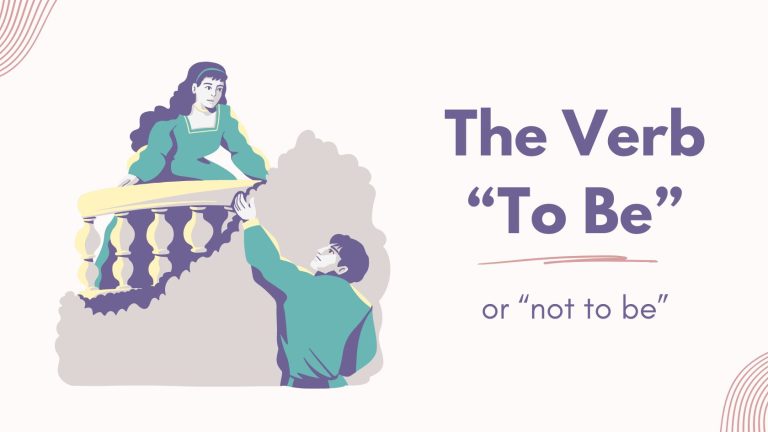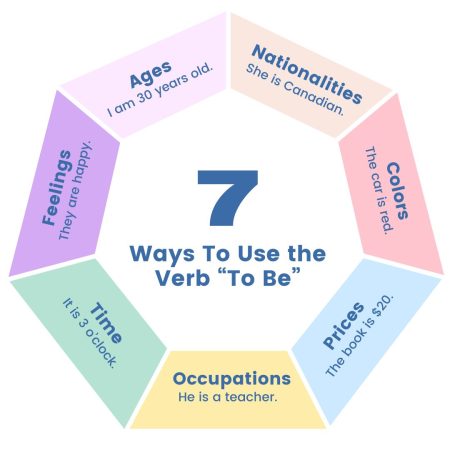The Verb “To Be”

Conjugating the Verb “To Be”
“To be or not to be.” Shakespeare used the verb “to be” to explore deep questions about our existence. But we won’t go that much in-depth.
Instead, we’ll keep it simpler. First, let’s go over the structure and usage of the verb “to be”. Then, let’s finish with some examples.
When Do We Use the Verb “To Be”?
We use the verb “to be” to talk about ages, nationalities, colors, prices, occupations, time, and feelings.

Here are examples of each:
- Ages: “I am 30 years old.”
- Nationalities: “She is Canadian.”
- Colors: “The car is red.”
- Prices: “The book is $20.”
- Occupations: “He is a teacher.”
- Time: “It is 3 o’clock.”
- Feelings: “They are happy.”
So as you can see, the verb “to be” helps us describe almost every aspect of our lives.
1. Affirmative Form
For affirmative sentences with “to be,” the structure is simple:
- Subject (who or what the sentence is about)
- Form of “to be” (am, is, are)
- Complement (information about the subject)
Examples:
- I am a student.
- We are friends.
- He is old.
This structure helps us make clear, positive statements about something. Remember we can use the shortened form with “I’m”, “we’re”, and “she’s”.
2. Negative Form
For negative sentences with “to be,” add “not” after the form of “to be.” The structure looks like this:
- Subject (who or what the sentence is about)
- Form of “to be” + not (am not, is not, are not)
- Complement (information about the subject)
Examples:
- I am not a vet.
- They aren’t cousins.
- She isn’t young.
By using the negative form of “to be”, we can express something that is not the case. There’s also the option to shorten the verb using “aren’t” and “isn’t”.
3. Interrogative Form
For questions with “to be,” flip the subject and the form of “to be.”
The structure is as follows:
- Form of “to be” (am, is, are)
- Subject (who or what the sentence is about)
- Complement (information about the subject)
Examples:
- Am I happy?
- Are they relatives?
- Is she hungry?
The interrogative form helps us ask about the state, identity, or condition of something.
The Verb “To Be”
So, there you have it. This is a short article on the verb “to be”, which is considered to present simple tense.
We’ve explained how to use it. Plus, you’ve learned about its structure in affirmative, negative, and interrogative forms.
Do you have any questions about what we covered? Feel free to ask, or share a comment if something stood out to you. Use our comment form down below.
